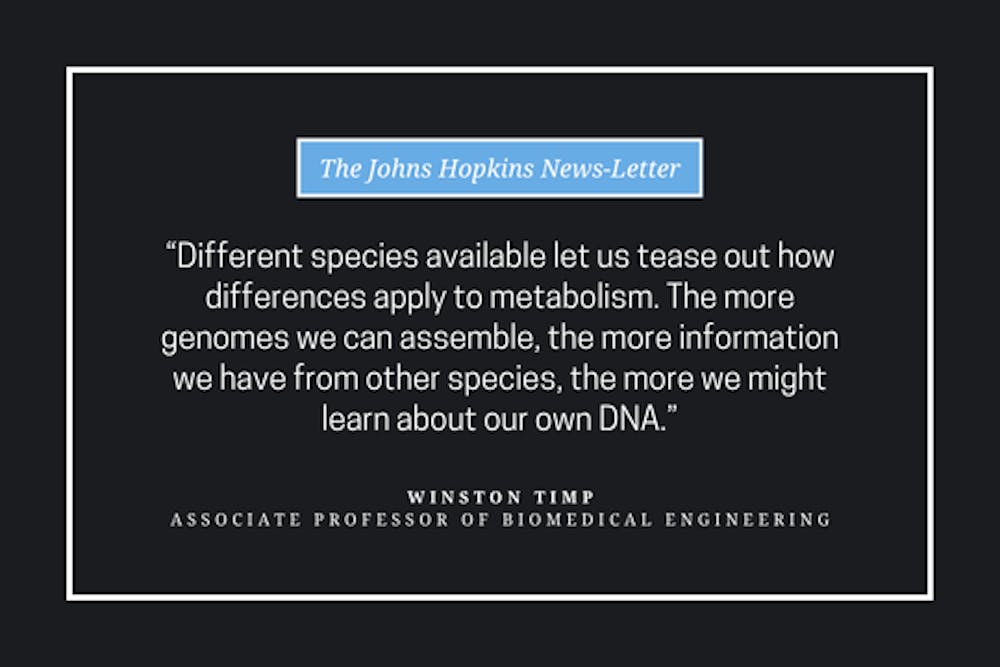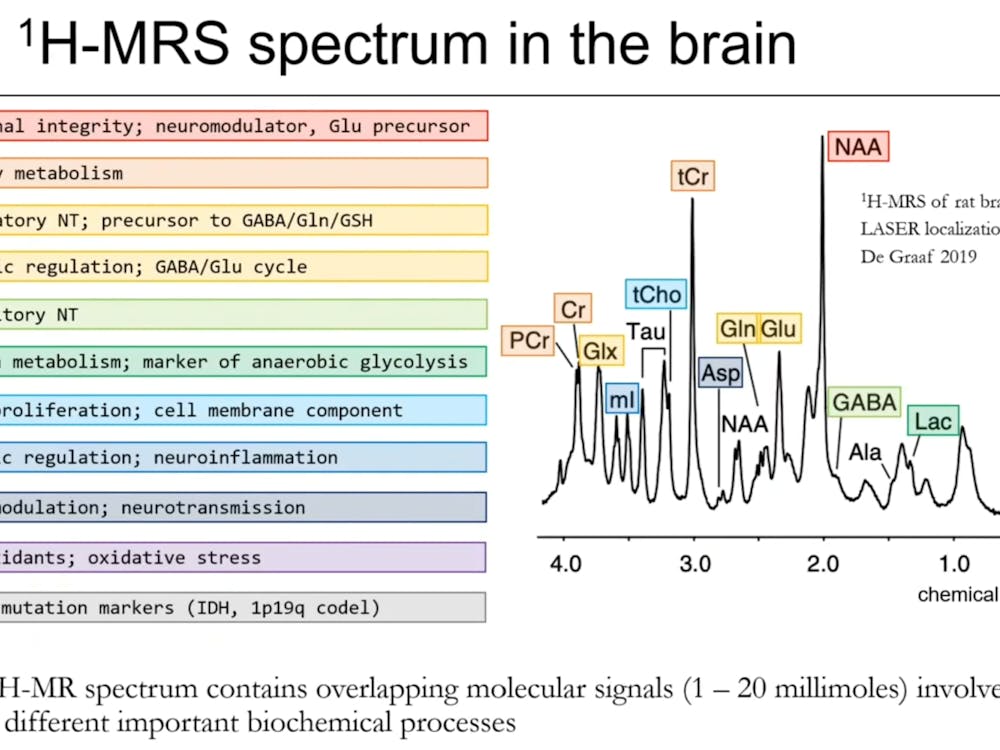What if we could trace the origins of disease back to just four letters — the DNA base — and even correct them at the molecular level?
Genomic research is entering a new era, driven by rapid advancements in sequencing technology and computational models to interpret them. Genome assembly, however, can be challenging, like piecing a puzzle together without the picture on the box — full of gaps, repeats and unknowns. Yet, developments hold great potential in clinical and biotechnological settings.
Winston Timp, the principal investigator of the Timp Lab and associate professor of Biomedical Engineering (BME) at the Whiting School of Engineering and Hopkins School of Medicine, develops tools to read and assemble genes. His primary technique, nanopore sequencing, uses small pores to characterize RNA, DNA and potentially even proteins. The data it produces is a framework to create quantitative means to model intricate systems, track gene regulation and trace diseases back to their genetic roots.
“When I was learning about some of these things back in undergrad, even I was struck by how little is known,” Timp reflected in an interview with The News-Letter.
Just as electrical engineering saw its revolution in the 20th century with the advent of transistors, Timp affirms that the 21st century has great things in store for biology. He believes that we are at a cusp where researchers can leverage developments in tools and big data to ask increasingly relevant and precise questions.
On the clinical side, physicians can understand disease from its causal molecular level over observed phenotype alone. In an academic context, this leads to more fundamental understanding: a mechanistic insight into the genome in place of descriptive studies.
Specifically, his proprietary method, UNCALLED4, created in collaboration with Mike Schatz, Bloomberg Distinguished Professor of Computer Science and Biology, detects novel changes like epigenetic modifications to DNA and RNA (ones researchers often didn’t know were present) using raw electrical data. It also conducts a rapid analysis of the electric data acquired to decide which parts of genetic material to sequence, a method called adaptive sampling. Timp’s lab is one of the first to work on adaptive sampling mechanisms alongside Matthew Loose.
Genomic research can even supplement fields like ecology. The Timp Lab’s work includes genome assembly of species like hummingbirds and giant sequoias, and were part of the team that completed the human genome, contributing to its first complete, gapless sequencing. This importantly provides insight into genetic diversity, avoiding bottleneck populations in ecosystems.
The hummingbird genome offers more translational significance than one would expect. Deciphering its rapid metabolism by evolutionary changes to key metabolic enzymes can unravel the big unknowns of human metabolism — how interconnected human enzymes and pathways work.
“Different species available let us tease out how differences apply to metabolism. The more genomes we can assemble, the more information we have from other species, the more we might learn about our own DNA,” Timp stated.
Nanopores are truly innovative not only due to their seemingly infinite applications, but also their accessibility. In fact, BME undergraduates can discover their hidden sequencing talents in Timp’s spring semester class with just a USB stick that can plug into a MacBook.
“It is incredibly exciting to be able to expand the field of human knowledge and especially as biomedical engineers to have direct clinical impact with the tools and questions that we can answer,” he said. “We need people to interface between science and medicine to really translate these findings so they can have a clinical impact.”
Collaboration is also critical in academic research, enabling scientists to answer questions they never could have individually, he emphasized, citing the environment at Hopkins and his own experience working with experts from diverse fields including pathology and computer science.
“You can’t be the best at everything, and why should you try! Instead, work together as a team. Instead of trying to have the whole pie, just make a bigger pie!” he said.
Even within his own lab, he enjoys the diverse perspectives, backgrounds and ideas graduate students bring. His most memorable moments have been with trainees that have a ‘stupid idea’ that he is sure would never work. When they end up trying it and it works brilliantly it reaffirms what he loves most about academic research.
“The best feeling is to be wrong, or surprised, cause then you’re learning something new,” he said.
Federal funding cuts have thrown a major wrench in the works, causing looming uncertainty in the future of academic research. Timp revealed that diversifying his funding portfolio through sources like pharma and biotech companies, philanthropic foundations and state funding has been a beneficial alternative.
When asked if reliance on private funding could affect the inherent bias in or restrict the scope of studies, he reiterated that most scientists are already motivated to show important and impactful results. This desire is simply amplified by industries that want functional products for consumers.
“The answer is you have to be careful, objective and transparent. Report everything that you’re doing, how you’re doing it and share all the raw data,” he said.
Editor’s Note: A previous version of the article did not include Matthew Loose and mislabeled UNCALLED4. The News-Letter regrets these errors.





